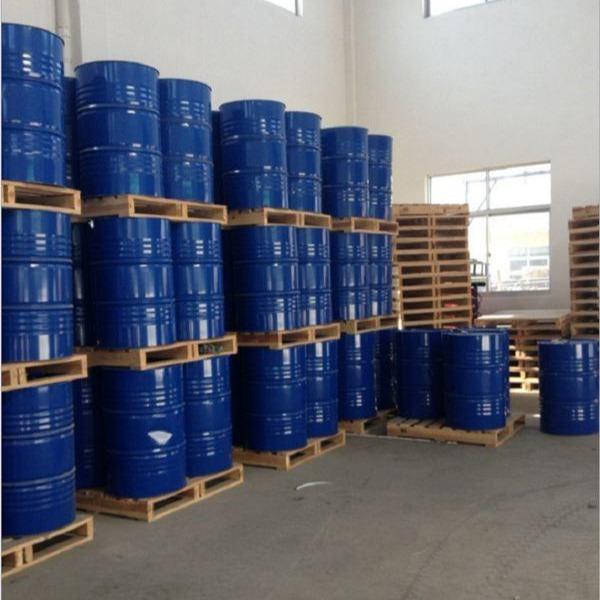-

Phenol
Phenol is one of the main components of coal tar. In 1834, Runge discovered phenol from coal tar, and Laurent first prepared crystalline phenol in 1841. Phenol is a product in which a hydrogen atom on the benzene ring is replaced by a hydroxyl group. Phenol exists in nature in free form or in the form of derivatives (more often in the form of derivatives). The pure product is white or colorless hygroscopic crystals. In the air or when encountering unclean substances, it gradually turns into r...Read more -

1-Propanol
Propanol is a compound in which one hydrogen atom in the propane molecule is replaced by a hydroxyl group. Since the hydroxyl group can replace the hydrogen on the two ends or the middle carbon atom of the carbon chain, two isomers, n-propanol and isopropanol, can be produced. The chemical properties of n-propanol are similar to those of ethanol. It is a byproduct of the synthesis of methanol from carbon monoxide and hydrogen. At room temperature and pressure, it is a colorless, transparent l...Read more -

Isopropyl alcohol
Isopropyl alcohol is also known as fire wine, dimethyl methanol, 2-propanol, English: isopropylalcohol, the simplest secondary alcohol, and one of the isomers of n-propanol. A colorless, flammable liquid with a strong odor, similar to the smell of a mixture of ethanol and acetone, but not very strong. It is soluble in most organic solvents such as water, alcohol, ether, benzene, chloroform, etc., and can be miscible with water, alcohol, ether, and can form an azeotrope with water. Density (sp...Read more -

Propylene glycol
The scientific name of propylene glycol is “1,2-propylene glycol”. The chemical formula is CH3CHOHCH2OH. The molecular weight is 76.10. There is a chiral carbon atom in the molecule. The racemic body is a hygroscopic viscous liquid with a slightly spicy taste. The specific gravity is 1.036 (25/4℃), and the freezing point is -59℃. The boiling point is 188.2℃, 83.2℃ (1,333 Pa), Chemicalbook is miscible in water, acetone, ethyl acetate and chloroform, and soluble in ether. It can be ...Read more -

Dimethyl carbonate
Dimethyl carbonate is referred to as DMC. It is a colorless, transparent liquid with a pungent odor at room temperature. Its relative density (d204) is 1.0694, its melting point is 4℃, its boiling point is 90.3℃, its flash point is 21.7℃ (open) and 16.7℃ (closed), its refractive index (nd20) is 1.3687, and it is flammable and non-toxic. It can be mixed with almost all organic solvents such as alcohols, ketones, and esters in any proportion and is slightly soluble in water. It can be used as a...Read more -

Ethanol
Ethanol is a type of alcohol and the main component of wine. It is also commonly known as alcohol and liquor. It is neutral. Ethanol is flammable and is a commonly used fuel, solvent and disinfectant. It is also used in organic synthesis. Industrial alcohol contains a small amount of toxic methanol. Medical alcohol mainly refers to ethanol with a volume percentage concentration of about 75% (or a mass percentage concentration of 70%), and also includes other concentrations of alcohol widely u...Read more -

Chlorobenzene
Chlorobenzene, also known as chlorobenzene, is a colorless transparent liquid. It is volatile. It has the smell of benzene and slight anesthetic properties. This product can form an explosive mixture with air, and the explosion limit is 1Chemicalbook.83%~9.23% (volume fraction). The chlorine atoms in this product can be hydrolyzed to produce phenol. If hydrolyzed in an ammonia solution, aniline can be produced.Read more -

Benzyl chloride
Benzyl chloride, also known as benzyl chloride and chlorinated toluene, is a colorless liquid with a strong pungent odor. It is miscible with organic solvents such as chloroform, ethanol, and ether. It is insoluble in water but can evaporate with water vapor. Its vapor has a certain irritation to the mucous membrane of the eye and is a strong tear gas. At the same time, benzyl chloride is also an intermediate in organic synthesis and is widely used in the synthesis of dyes, pesticides, synthe...Read more -

Benzoic acid
Benzoic acid is also called benzoic acid. Its molecular formula is C6H5COOH. It is the simplest aromatic acid in which the carboxyl group is directly connected to the carbon atom of the benzene ring. It is a compound formed by replacing a hydrogen on the benzene ring with a carboxyl group (-COOH). It is a colorless, odorless flaky crystal. The melting point is 122.13℃, the boiling point is 249℃, and the relative density is 1.2659 (15/4℃). It sublimates rapidly at 100℃. Its vapor is highly irr...Read more -

m-Xylene
Chemical properties: Colorless transparent liquid with strong aromatic odor. Insoluble in water, soluble in ethanol and ether. Uses Meta-xylene is an intermediate for fungicides such as metalaxyl, furalaxyl, bensulfuron, oxadiazine, chlorothalonil, as well as insecticides and miticides such as amitraz, monoformamidine, chlordimeform, and herbicides such as chlorfenapyr and butachlor. Uses: 1. Meta-xylene is mainly used as a solvent for the production of isophthalic acid and then unsaturated p...Read more -

Isophthalic acid
Isophthalic acid (IPA), also known as 1,3-phthalic acid or isophthalic acid, has strong heat resistance, hydrolysis resistance and chemical resistance, and can undergo salt formation, dehydration, hydrogenation, halogenation and other reactions. Its biggest use is as an intermediate chemical book in the production of unsaturated polyester resins, followed by the manufacture of polyester resins, alkyd resins (mainly used in coatings) and printing inks. In addition, it can also be used to reinf...Read more -

Ethylbenzene
Ethylbenzene, ethylbenzene, is a colorless liquid with an aromatic odor. It is insoluble in water, but soluble in most organic solvents such as ethanol and ether. It is relatively stable and is used in organic synthesis and as a solvent. It is highly irritating to the skin and mucous membranes, and has an anesthetic effect at high concentrations.Read more





